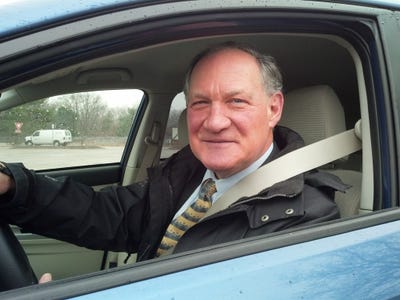
Despite battery-electric vehicles’ growing popularity, 85% of their buyers also have at least one gasoline-fueled vehicle. Just 4% own only an EV.
That’s according to Experian’s latest Automotive Consumer Trends Report that covers this year’s second quarter and draws from vehicle registration data and other sources.
Does that mean people can’t rely on EVs exclusively to serve all their mobility needs?
“There’s some validity to that statement,” Kirsten Von Busch, director, product marketing-automotive for Experian, tells Wards.
EVs are catching on in the marketplace for various reasons. Those include government incentives, automakers rolling out more models and a narrowing price gap compared with gasoline-powered counterparts.
“Although EVs are growing in popularity, it’s natural for some consumers to still opt for a secondary vehicle,” Von Busch says. “With fewer charging stations in some states, they may feel more comfortable with a gas-powered vehicle.”
Worst case: No driver wants to experience full-blown range anxiety and run out of juice in the middle of nowhere. Such fears presumably abate as EV charging stations become more widespread.
Currently, more than 2.7 million EVs are in operation in the U.S., 1 million more than in 2022’s second quarter, Experian reports.
EVs now make up 7.5% of new-vehicle registrations, up from 5.7% this time last year, Experian says. Tesla is the market leader.
With EVs, dealers are adapting to a new way to sell vehicles, says Ed Roberts, chief operating officer at Bozard Ford-Lincoln in St. Augustine, FL. “It’s not like doing it the way we’ve always done it.”
That requires sales staffers to become more product-knowledgeable so they can field customers’ questions, of which there typically are many.
“It’s a huge opportunity for us if we do it right and properly train salespeople,” Roberts says. “We dance in the EV market. Are we great in it? Not yet. But we want to be.”
He adds: “Dealers know how to sell cars – and they’re the only ones (who offer test drives). To successfully sell EVs, you have to put people in seats.”
The first waves of EV buyers were relatively familiar with such vehicles in the first place, and consequently didn’t pose many questions to dealership salespeople, Michelle Krebs, executive analyst for Cox Automotive, says,
“Dealers didn’t have to ‘sell’ to those first customers,” she says. “Now, there’s a sales job that needs to be done.”
Yet EVs aren’t for everyone, both individually and regionally.
By state, California is far and away the market-share leader. It accounts for more than 37% of U.S. EV sales, according to Experian. Conversely, Wyoming, North Dakota and South Dakota register fractional shares below 1%.
“I grew up in rural America, where there isn’t a lot of interest in EVs,” Krebs says.
EV popularity also seems weak in the vehicle-rental market. That’s illustrated by an experience Nancy Dunham, Wards principal analyst for retail, recalls.
She had reserved a vehicle with an internal-combustion engine for an Austin, TX, visit but was told at the airport rental center that none were immediately available, only EVs.
Dunham tried other rental agencies, but to no avail. “None had gas-powered cars,” she says. “Approximately 90% of the people in the lines wanted ICE cars, including a couple that own two Teslas. In fact, they were the most determined to get a gas-powered car.”
About the Author
You May Also Like

